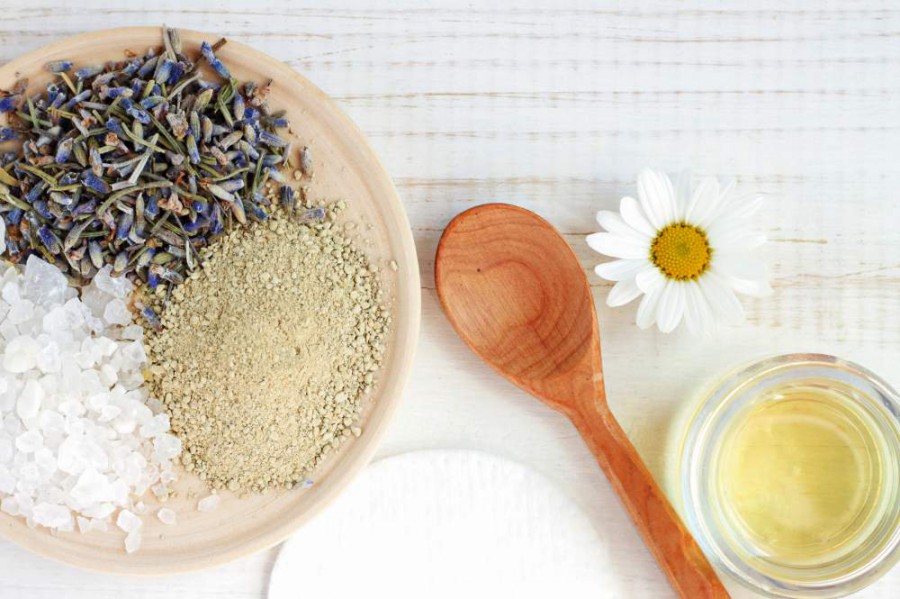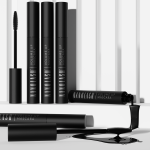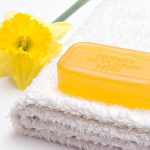We’re using natural ingredients coming from Mother Nature in skin and hair care more and more often. A cosmetic clay is among them, offering a wide range of uses in body care. The best thing is we can mix it with other cosmetics, enhancing its qualities and, in effect, improving the state of skin and hair. What are the types of clays & what benefits they can bring?
What is a cosmetic clay?
Cosmetic clay, or Kaolinite, is a mineral which contains macro and micro elements (silicon, calcium, magnesium, potassium, iron, phosphorus, zinc, copper and selenium). A finest-quality cosmetic clay is composed of 95% of active ingredients. If you go for the purchase, firstly check if it is free of fragrances, preservatives or negative compounds affecting the effectiveness. The color of a clay is important as well because every color delivers different benefits for hair and skin.
Cosmetic clay – qualities & types
- Green clay owes its color to a large quantity of divalent iron. It is extracted from the flint and aluminum rocks found in France. It gives best effects for oily, combination, acne-prone, eczema or psoriasis-affected skin. Green clay has disinfecting, soothing, degreasing and cleansing action. It is unsuitable for sensitive, dry and delicate skin but it works for mature skin, smoothing wrinkles.
- Red clay has similar qualities to green clay; it works more mildly, though. It absorbs sebum and impurities, reinforces the walls of blood vessels and helps treat acne rosacea. It is designed for oily, sensitive and vascular skin care. Thanks to that, the skin is smooth and fresh.
- Yellow clay differs from the red clay only because of the content of iron oxide. There’s much more of it and it has a higher valence. It is used for oily, combination, acne-prone and ageing skin.
- White clay, also known as white Kaolin clay. It has astringent, nourishing and regenerating properties thus suits dry, delicate and sensitive skin. It alleviates skin, speeds up wound healing and evens out skin tone. There is white Jordanian clay (cut out for cellulite compress) and Anapa clay which stimulates skin to produce collagen, has delicate exfoliating power and reduces wrinkles.
- Pink clay is a combination of red and white clays in a 1:2 proportion. It is recommended for sensitive, delicate and allergy-prone skin. It soothes tired skin, purifies skin pores and makes them less visible.
- Blue bentonite clay is dedicated to oily, acne-prone skin, skin affected by dermatitis, eczema or psoriasis. It has absorbing, wrinkle-smoothing and cellulite-reducing action. It additionally brightens skin, provides oxygen and tightens skin.
- Ghassoul clay is, in other words, red Moroccan clay. It is a brown and red highly-absorbent powder – it is recommended for oily and acne-prone skin care. The clay regulates the work of sebum glands, gives a matte effect and freshens skin up. Interestingly, it is a game-changing hair and scalp product as it prevents hair loss.
- Fullers Earth clay is rich in minerals and has strong degreasing properties. It will be best for people who have oily and acne-prone skin. Moreover, this clay whitens and illuminates thus removes pigmentation spots and evens out skin tone.
- Canadian glacial clay works in a gentle way so it can be used by people having various skin types. This product hydrates skin, replenishes micro nutrients, increases blood flow, smoothes and evens out skin tone.
- Black clay is extracted from the Dead Sea. It works similarly to green clay by cleansing and unblocking skin pores. That is why it is dedicated to oily and acne-prone skin, skin which is impure, produces too much sebum and has unhealthily shiny T zone.
- Purple clay and red clay have similar benefits. Thanks to the color, purple clay is used for color therapy. How does it work? It softens, smoothes and illuminates skin. The product is designed for dry and normal skin.
Cosmetic Clay – how to use?
You mix a cosmetic clay with water, hydrosol or other fluid product. Next, you apply it as a mask to the face, neck and decolletage. Apply the paste topically to imperfections. The key thing is that you make sure not to let the clay dry on the skin. A fun fact – a cosmetic clay is a brilliant toothpaste or shampoo; it also works as an additive for a nice bath. You must rinse the clay mask off using lukewarm water.
DIY Cosmetic Clay Mask
For making a clay mask, you’re gonna need: powdery clay, thermal water or hydrosol, a bowl and a plastic or wooden tool for mixing. You may also make us of honey, yogurt or essential oil – these ingredients make a product work better and gift it with new properties. Mix the clay with a chosen fluid in a 1:1 proportion and apply to your face skin. Let it sit in for around 10 minutes. After rinsing it out, use a toner and a moisturiser.









Leave a Reply